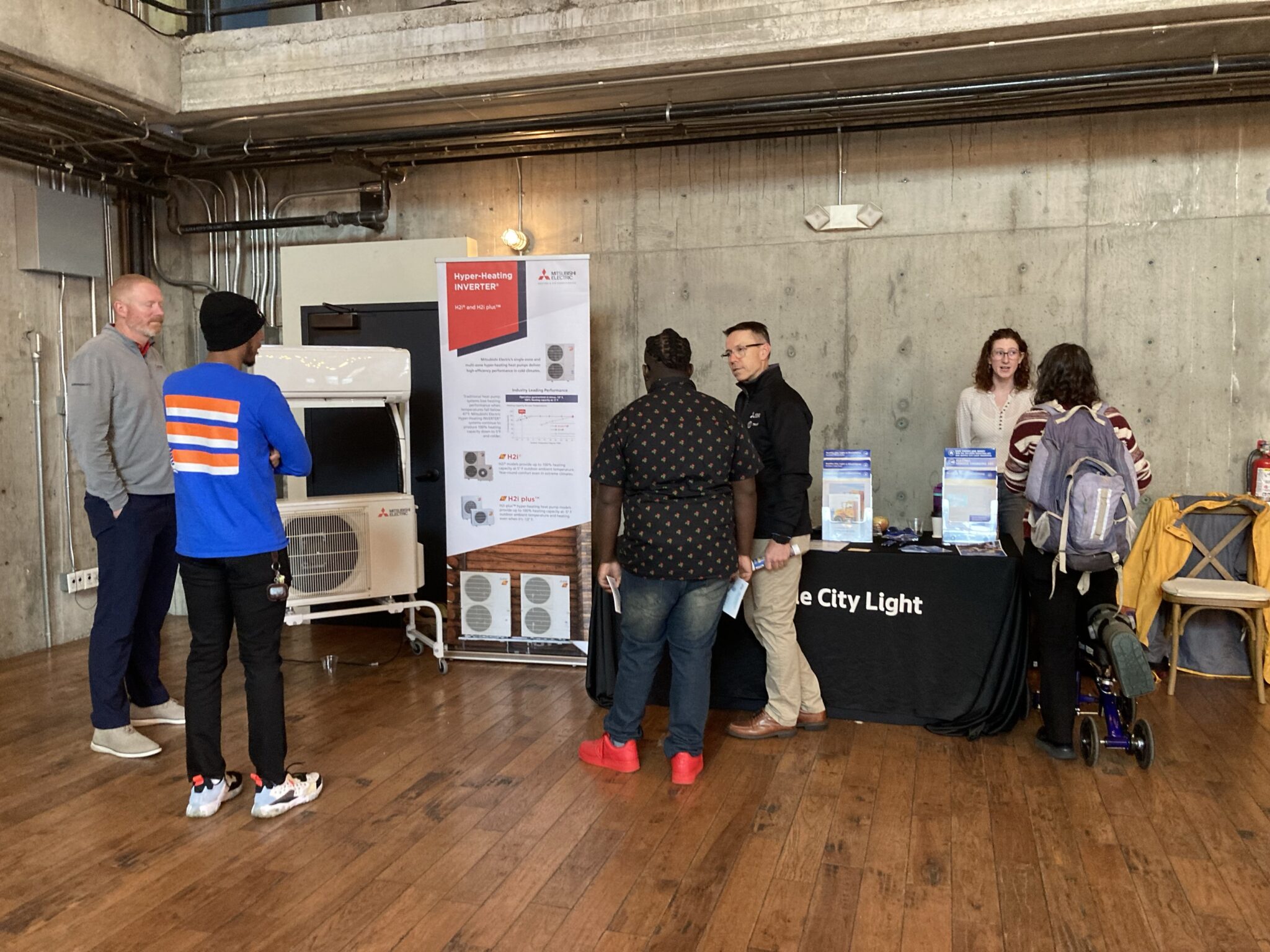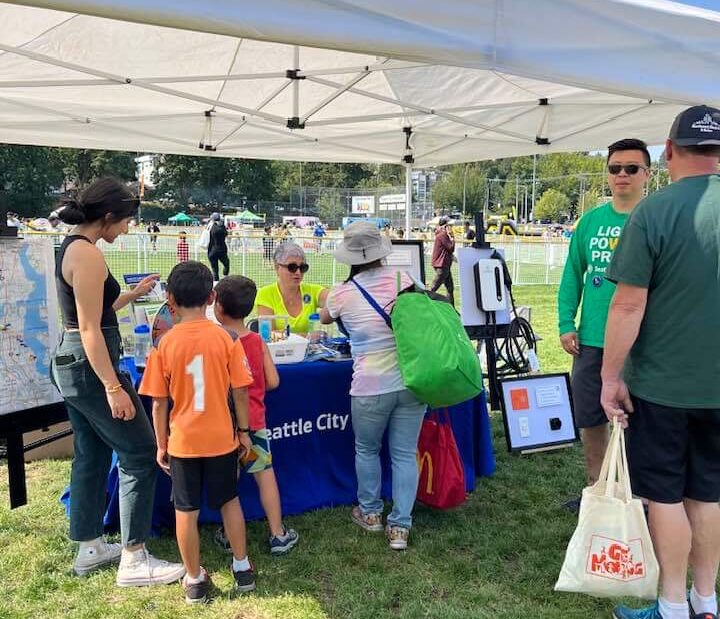
Did you know buildings in Seattle generate more than a third of the city’s total emissions? Natural gas, oil, and other fossil fuels that power furnaces, boilers, water heaters, and more create climate pollution. Fortunately, City Light’s electricity comes from renewable sources. When our customers switch to powering their homes and buildings with our electricity, they reduce emissions.
Washington State and City of Seattle are moving towards net-zero emissions buildings by 2050. City Light’s electricity is at the center of this clean energy transition. Electrification can reduce costs, improve the health of our communities, and create jobs. This is why we’ve developed a Building Electrification Strategy, a key part of City Light’s broader electrification efforts.
Let’s take a look at the strategy’s five key objectives.
1. Increasing awareness and access.
Everyone—our communities, customers, and employees—deserves access to the benefits of electrification. That’s why we’re focused on raising awareness and access to these benefits.
During our outreach, we learned customers often lack information about our energy resources. Without this, it’s difficult to make decisions about what technologies are best for their homes and businesses. For example, 80% of customers surveyed believe that our power supply is less than 85% renewable. Most customers were also unaware that heat pumps provide cooling.
“ECOSS is excited to partner with City Light on equitable community engagement that promotes a just transition in building electrification. We look forward to co-creating engagement strategies and tools by and for community, ensuring that overburdened and underrepresented communities directly and holistically benefit from the installation of energy efficient systems.” — Chiyo Crawford, Executive Director, ECOSS
2. Building the workforce.

There is currently a workforce shortage in the technical trades, such as heat pump installers and HVAC technicians. These professions are necessary to install energy-efficient technologies and support building electrification. And women and people of color are underrepresented in these jobs. As this workforce grows, we also need to ensure it becomes more diverse.
To that end, we are building relationships with trade allies who can support equitable workforce education. These relationships include equipment manufacturers, contractors, and other industry organizations. These relationships will help deliver high-quality and energy-efficient installations for our customers.
3. Offsetting electrification with efficiency.
One of the best ways to support building electrification is energy efficiency. It helps lower customer bills by reducing energy consumption. It can also offset the impact of electrification on our grid.
City Light has one of the longest running energy efficiency programs in the country. For over 40 years, we have been incentivizing customers to use energy efficiently. We are also exploring new options. The Time of Use rate coming in 2025 will encourage customers to use electricity when power is cheaper and demand is lower. This more efficient use of energy will directly affect customer bills.
4. Reducing upfront costs.

Electrification projects can be complex and costly. We can help guide customers to new funding sources and programs. We can also ensure that our current energy efficiency programs work with new funding opportunities.
For example, the Inflation Reduction Act is offering historic federal funding opportunities. To prepare for this, we’ve partnered with Puget Sound Energy to offer a free heat pump pilot to Skyway residents. The goal of the assessment is to upgrade approximately 20 income-eligible homes with heat pumps and heat pump water heaters.
5. Strengthening grid resiliency.
To meet growing demand, we need to distribute new electrification loads throughout the day and year. This will make our grid more resilient, reliable, and help customers save energy.
One way we’re already doing this is through our TempWise pilot. During peak electric demand events last summer, we adjusted participating customers’ smart thermostats up to three degrees. Together, our customers reduced an average of 330 kilowatts per event!
We’re key to Seattle’s clean energy future.
We can all help protect our environment and elevate our communities. While we expect challenges, the Building Electrification Strategy is our guide. It lays out the steps for how to make building electrification work for our customers and communities.
We are excited to roll out innovative pilots, programs, and technical resources in 2024 and beyond!
